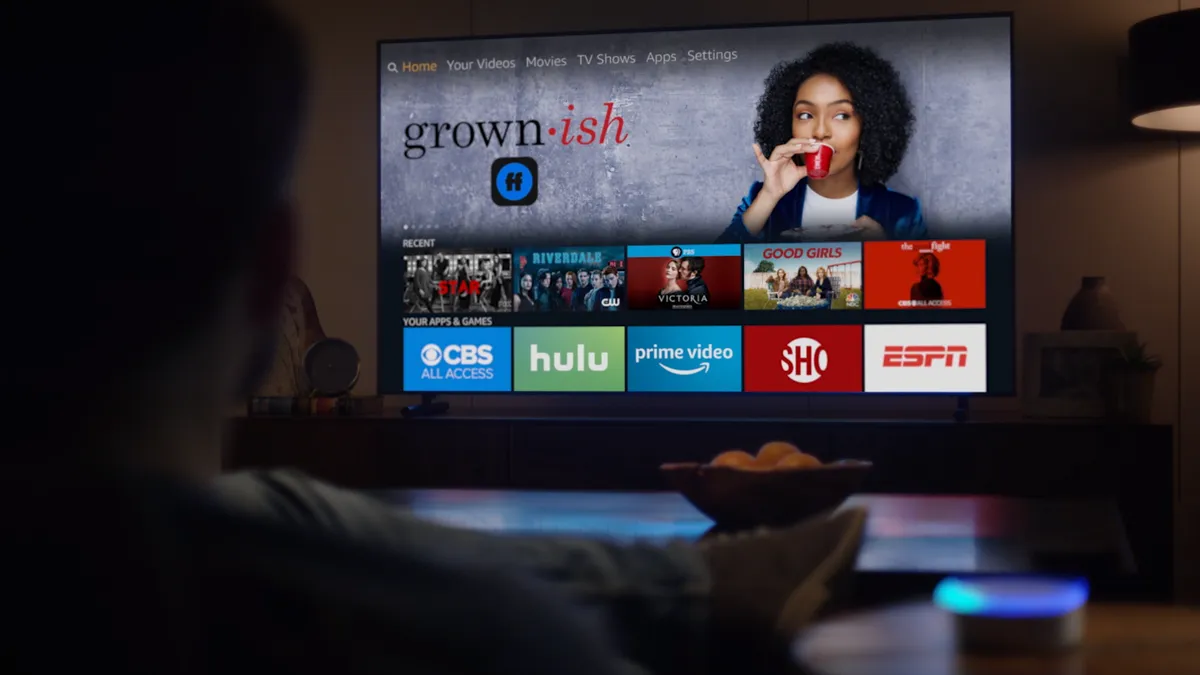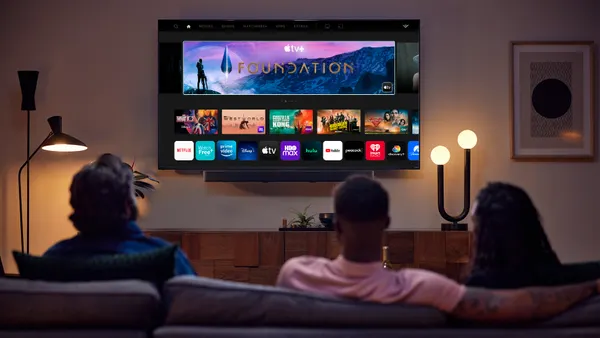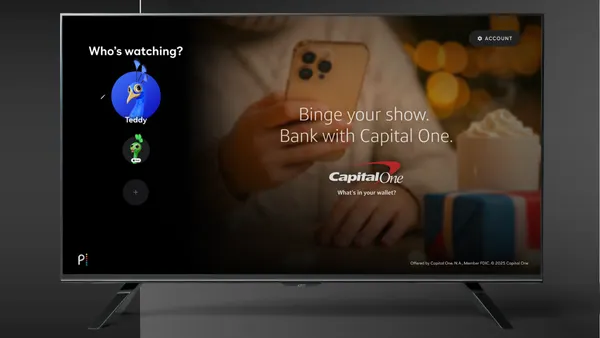Dive Brief:
- Video ad impressions on connected TVs grew to 50% of the total in Q2, up 31% from the same period a year ago. That growth meant that CTVs had twice the video impressions than mobile devices, per a report by ad software firm Extreme Reach.
- Premium publishers delivered 83% of video ad impressions, compared with 17% for media aggregators. DTC brands favored premium publishers, placing almost all their video ads on the platforms, about 20% higher than for a broader group of advertisers. Ninety-five percent of DTC ads were 30-seconds long.
- Thirty-second ads saw a 19% gain in impressions in Q2 from a year earlier, but slipped by 7% from the prior quarter. Fifteen-second ads fell by 24% from the prior year, but rose 20% from Q1. Six-second ads fell 7% in Q2 from a year earlier, but rose 60% from Q1.
Dive Insight:
Advertisers are gravitating toward premium content that people want to watch on the biggest screen in their homes rather than on mobile, tablet or desktop, Extreme Reach's data suggests. That's especially true for DTC brands that aim to reach viewers who are most engaged with TV programming and may be ready to shop. CTV ad revenue in the U.S. is forecast to grow 66% to $47.8 billion by 2023 from $28.8 billion last year, per Digital TV Research data cited by Extreme Reach.
TVs with direct internet connections have led to a significant shift in viewing habits, with millions of people canceling their pay-TV subscriptions while keeping broadband service to watch streaming video. More than half (56%) of the U.S. adult population watches streamed video, up from 48% last year and 40% in 2017, per researcher Nielsen. The portion of U.S. households that stream TV programming has grown to 65% this year from 59% in 2018 and 51% in 2017. Time spent watching streamed shows has grown this year to two hours and four minutes a day, up from just under two hours the past two years, the researcher said.
Advertisers have a variety of ways to reach CTV audiences. Streaming devices like Amazon Fire TV, Roku, Apple TV and Google's Chromecast provide access to cable and broadcast channels that have ad inserts, while "skinny bundle" services like Sling TV, Philo and YouTube TV also carry those channels. Some streaming services like Disney-owned Hulu have lower-cost tiers with ad insertions, while NBCUniversal's Peacock service that launches in April also will have a mix of ad-supported and ad-free tiers. Netflix doesn't carry ads, but sponsors have found ways to collaborate with the company on product placements and co-promotions. The upcoming Apple TV+, Disney+ and HBO Max also will be ad-free.













